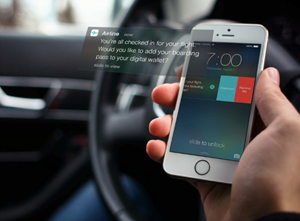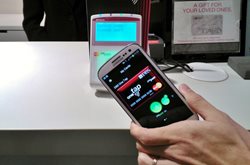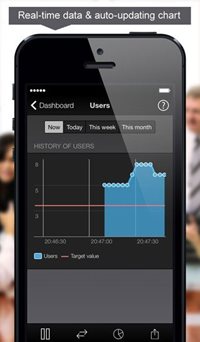5 Emerging mCommerce Technology Innovations
According to a BI Intelligence report, between 2016 and 2020, U.S. mobile commerce (mCommerce) sales are projected to grow nearly 260%, from $79 billion to $284 billion. This statistic presents enormous opportunities for retailers to harness the unique power of mobile and also means that retailers who aren’t offering mobile sales in 2017 are really going to lose out. However, like every rose has its thorn, mCommerce has its own unique challenges to overcome. Baymard Institute, for instance, concluded that while using traditional (desktop) ecommerce websites, two out of three shoppers abandon their shopping carts without buying the products they were looking for. The numbers are even more depressing on mobile where conversion rates are 70 percent lower than desktop. Not to worry, though. To help you navigate these daunting but abundant waters, we have put together the key emerging mobile commerce technologies you should be aware of and adopt:
Mobile Image Recognition (MIR) Technology
 Mobile Image Recognition Technology brings information from the outside in. It is virtual words equivalent to window shopping in the real word as users can take a photo of a product on the go and upload that image on a MIR-driven app and voila, all the online offerings from different e-retailers at their fingertips. If the user likes any offering displayed on the mobile phone screen, one touch is enough to complete the transaction. Although the technology is still in its infancy, it is likely to set strong foot across the industry.
Mobile Image Recognition Technology brings information from the outside in. It is virtual words equivalent to window shopping in the real word as users can take a photo of a product on the go and upload that image on a MIR-driven app and voila, all the online offerings from different e-retailers at their fingertips. If the user likes any offering displayed on the mobile phone screen, one touch is enough to complete the transaction. Although the technology is still in its infancy, it is likely to set strong foot across the industry.
For instance, Curalate, an image recognition tech startup, just raised $27.5 million in a series C round. To give an idea of what this type of technology can offer, here’s the highlights of Curalate’s capabilities:
-
Like2Buy: Turns the one link in a brand’s Instagram profile into a gateway to buy products from any of their Instagram posts.
-
Fanreel: Pulls in user-generated images to a brand’s website and applies image recognition to tag products to show so they’re easy to buy.
-
Visual Insights: Generates analytics about which of a brand’s products are being shared in images on Instagram, Pinterest, Tumblr and other networks so businesses know what’s hot.
-
Reveal: Makes images on a business’ website shoppable by tagging the products in them and linking them to detail and purchase pages.
-
Ads: Allows brands to buy ads on Instagram and Pinterest using additional proprietary targeting options.
Amazon is possibly the earliest adopter of this technology in the commerce space as it bought an image recognition startup in 2009 and has had image recognition in its main mobile apps since 2014.
Personalized Push Notifications
Personalization is another feature that makes almost any technology trend list by default for all the right reasons.  Push notifications can be impulsive when the user is put on the receiving end of a generic blast. However, when it is wisely done, it can be a blessing. Integrating personalization into your push strategy is one of the primary ways to achieve that. After all, 76% of customers in the age group of 18 to 34 have enabled push notifications on their mobile devices.
Push notifications can be impulsive when the user is put on the receiving end of a generic blast. However, when it is wisely done, it can be a blessing. Integrating personalization into your push strategy is one of the primary ways to achieve that. After all, 76% of customers in the age group of 18 to 34 have enabled push notifications on their mobile devices.
The content for the push notifications includes customized deals and offers as well as tailored suggestions based on past search or purchase history. The blue-tooth powered Beacon technology in the stores is another smart helper when it comes to communication with your community and customers. Companies have started to offer mobile deals and greetings when someone walks into the store through beacon technology which works when consumers’ mobile devices keep searching for a beacon. Physical stores can implement physical beacons in the shops, so once someone walks in, their phone accepts the signal and provides something like a promotion. Marketers can configure their apps to activate messages as soon as certain conditions are met. If the user, for example, is within the beacon range for 3 seconds or 3 seconds after the user has left the beacon range, a marketing message can be triggered. Retailers like Sephora utilize beacon technology, which sends personalized promotions to users’ mobile device while simultaneously collecting consumer data. The beauty chain also has rolled out immersive apps that allow users to virtually try on products.
Beacons are truly versatile and have found wide-scale implementation from airports to retail stores to restaurants delivering marketing offers and product information. Other brands featuring beacons for marketing include Starbucks, Macy’s, Target, and Coco-Cola.
Near Field Communication (NFC) Technology
 NFC is a set of communication protocols that enable two electronic devices, one of which is usually a portable device such as a smartphone, to establish communication by bringing them within 4 cm (1.57 in) of each other. In other words, consumers can pay for items by simply tapping a NFC chip against an NFC terminal. When this technology integrated into mobile devices, consumers can use their smart phones to interact with readers to access information, validate tickets, redeem vouchers, collect loyalty points, make in-store payments and use many other commercial services. As a result, the technology eliminates the wasted time in the line and the risks of disclosing the vulnerability of the user privacy.
NFC is a set of communication protocols that enable two electronic devices, one of which is usually a portable device such as a smartphone, to establish communication by bringing them within 4 cm (1.57 in) of each other. In other words, consumers can pay for items by simply tapping a NFC chip against an NFC terminal. When this technology integrated into mobile devices, consumers can use their smart phones to interact with readers to access information, validate tickets, redeem vouchers, collect loyalty points, make in-store payments and use many other commercial services. As a result, the technology eliminates the wasted time in the line and the risks of disclosing the vulnerability of the user privacy.
According to Berg Insight, global sales of NFC handsets rose 300% to 140 million units and the top ten handset vendors released almost 100 NFC-enabled models in 2012. The research firm also expects one billion NFC handsets to be shipped in 2017. Moreover, the number of NFC-ready point-of-sales terminals is set to rise dramatically from 6.7 million in 2012 to 44.6 million in 2017.
Augmented Reality Apps
Augmented reality applications is expected to be the next influential evolution for enterprises and consumer  brands alike. By 2017, 1 billion AR apps will be downloaded to generate revenue of more than $1.6 billion. According to experts, the driving factor is that AR apps are not limited to conventional mobile apps.
brands alike. By 2017, 1 billion AR apps will be downloaded to generate revenue of more than $1.6 billion. According to experts, the driving factor is that AR apps are not limited to conventional mobile apps.
Augmented Reality can be a game changer in the mCommerce industry as using this technology, an online shopper can virtually experience the product. If the store has AR application that access the device’s camera in real time, it can position the glasses on the user’s face. This gives a better idea of how eyewear will look in real life from different angles.
The concept of Augmented Reality can prove to be extremely useful for the mCommerce sector. For example, at present, if someone has to buy a pair of sunglasses online, a niche portal will provide an ability to upload his/her picture and use a basic tool to see how they will look on them. Or a consumer can have a driver’s view of a new automobile. Enabling consumers to store their AR experiences on a mobile device adds a new link between the enterprise and its customers.
Here are some benefits of AR for mCommerce retailers:
-
Drive Sales: Enabling customers to try on a product and experience how it looks on them often results in customer attachment to the product, meaning that the likelihood of a purchase increases.
-
Enhance Print Media Advertising: Purchase items on the go from your smartphones or tablets by simply scanning the AR-enabled images.
-
Replicates in-store experiences: Brick-and-mortar is still a dominant player despite the power of smartphones, tablets and the increased investment in online sales by traditional retailers. However, with AR technology, customers can digitally check the price, view a 3D model, try on clothes and then seamlessly place an order so retailers would replicate the store experience.
-
Differentiate your business from competitors: Since the technology has not gone mainstream, yet, developing AR experiences puts brands in a different position from their competitors, especially, in their tech-savvy consumers’ eye.
The AR technology blurs the line between tangible world and the digital world, and retailers can implement this technology on simply smartphones or a wearable like Google Glass on a more advanced level. It may not be a mainstream in mCommerce just yet but e-commerce companies have already started steps in integrating their digital world with the tangible one to give consumers a better experience.
Analytics and Predictive Technologies
 As I cited as a second trend, personalization is an essential way to communicate with your community and customers. To personalize their content, retailers need to employ analytics tools and predictive technologies so they can gather all the data and translate them to a meaningful context to deliver a personalized and tailored experience to their customers.
As I cited as a second trend, personalization is an essential way to communicate with your community and customers. To personalize their content, retailers need to employ analytics tools and predictive technologies so they can gather all the data and translate them to a meaningful context to deliver a personalized and tailored experience to their customers.
“While predictive analytics analyze the volumes of Big Data collected on shoppers, the IoT augments predictive analytics by collecting data from multiple points of customer contact, including brick and mortar stores, websites and telephone calls,” said TechVision Research Analyst Mike Valenti. “Integrating these technologies supports the goal of omni-channel sales and creates a seamless shopping experience at any venue.”
Here are some benefits of predictive analytics for m-commerce retailers:
-
Simplify the buying process: Based on consumers’ past purchases and actions taken directly from their mobile devices, retailers who take advantage of predictive analytics can deliver buying suggestions so the purchasing process would be simplified for consumers as they can find what they are looking for much faster.
-
Make customers return to your business: A business that capitalize predictive analytics also stand a higher chance to convert a one-time customer into a repeat buyer. It does not only mean that business can generate more revenue but also reduce their cost of customer attainment as it is 7 times more expensive to get a new customer than it is to retain an existing one.
-
Offer special deals: When the engagement takes place in-store on a mobile device, the likelihood of a purchase increases even more as armed with customer data, a business can offer instant in-store-only and personalized promotions.
-
Learn more about your customer: Mobile purchases leave a trail of data that can tell us quite a bit about consumer buying behavior. This data allows businesses to form more relevant and lasting engagements with their customers. And as the buying process becomes more simplified, customers will reward brands they trust with recurring purchases.
-
Locate your customers: Location based notifications are more local and personal in nature. They help businesses convert more and generate higher revenues. Location tracking also brings more foot traffic to the physical store.
Mobile commerce often makes us think of the B2C market but it is actually substantially emerging in the B2B market, too. The recent figures show that B2B generates 19.4% of digital commerce revenue from mobile channels compared to B2C’s 22.6%. Even though B2B generates less revenue than B2C, the pace of adoption is extemly fast as 50% are B2B buyers are tech-savvy, young mobile users, who are decision makers, influencers or stakeholders. Therefore, B2B mobile commerce will see more and more increase in the coming years.
Gartner estimates that in 2017 U.S consumers’ mobile engagement behavior will push up mobile commerce revenue to 50 percent of U.S. digital commerce revenue. Therefore, mobile payment has become a competitive arena. Market leaders like Google Wallet, Apple Pay, PayPal,Venmo, V.me (by Visa), Masterpass (by MasterCard) and more are trying to consolidate their position in the face of growing competition fueled by new entrants. Even this movement alone tells us that mobile commerce is the future of the e-commerce. 2015 was a turning point for mobile shopping and in 2017, it is expected to take off. The future of mobile commerce depends on upon the user experience. Therefore, heavy investments in research, development, and integration of innovative technology is the key to the survival of the industry.
Now that you know the prominent emerging mcommerce technologies, why not to check out one of CMS-Connected most popular articles entitled How to Drive Sales with Your eCommerce Content Strategy to improve your commerce content strategy.

Venus Tamturk
Venus is the Media Reporter for CMS-Connected, with one of her tasks to write thorough articles by creating the most up-to-date and engaging content using B2B digital marketing. She enjoys increasing brand equity and conversion through the strategic use of social media channels and integrated media marketing plans.